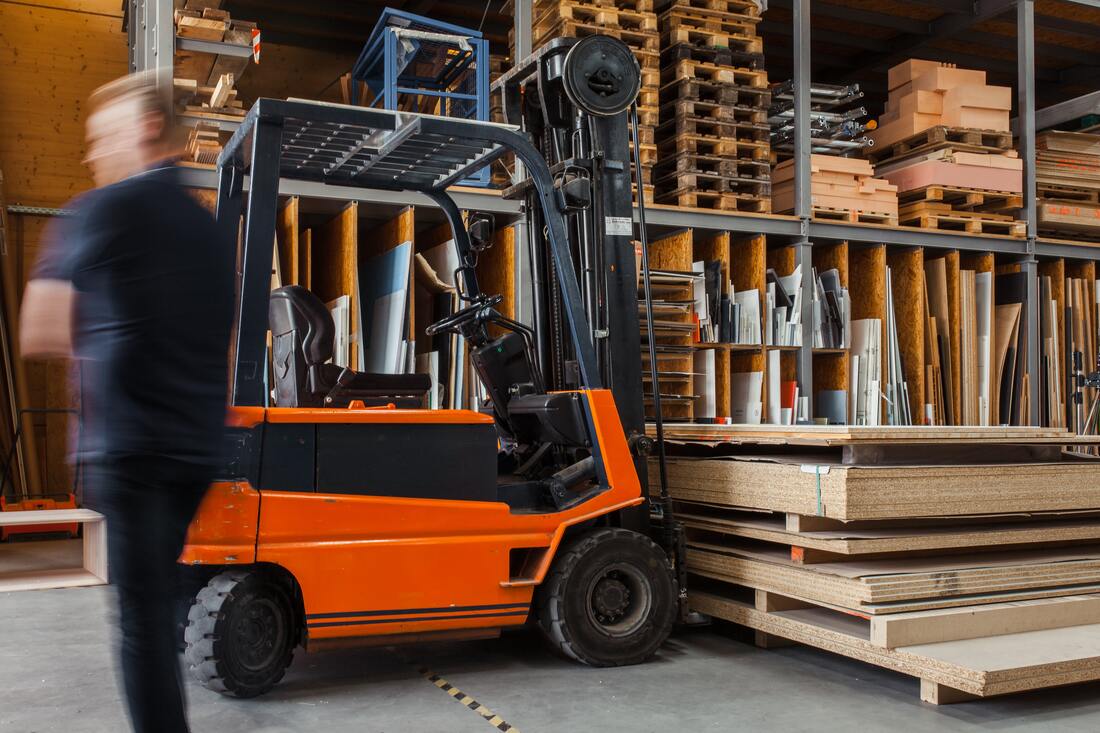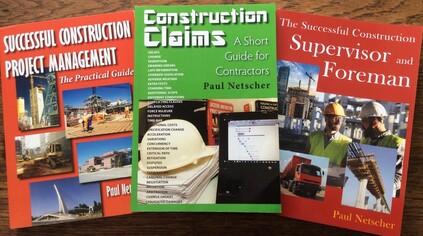|
The warehouse is the heart of any business, and it's crucial to get the storage right. A warehouse can be tailored to suit your needs in a number of ways; for example, you might need specific shelving or racks depending on what you're storing. We'll take a look into some of the basics that go into constructing a warehouse, so you know exactly what you're getting when building one. We also recommend checking out this blog post about The Top 5 Software for Construction Project Planning & Management. What Is A Warehouse?A warehouse is the storage facility for a company's inventory and serves as its point of distribution to consumers. It can either be spread over an entire area or part of one, depending on how much you need to store! A standard warehouse consists primarily of shelves where merchandise is stored pending shipment out. However, there are different construction types that can be used to suit different needs. We'll take a look into some of the basics that go into constructing a warehouse, so you know exactly what you're getting when building one! According to Statista, The number of warehouses is expected to reach just under 180,000 by 2025. The boom in e-commerce has led retailers and manufacturers alike for space that can store goods without transportation costs as well as provide easy access at any time necessary; this has caused an upsurge throughout North America where 25% more warehousing facilities are being built every year on average than anywhere else around the world! Types Of WarehousesThere are three types of warehouses to consider for your storage needs. These include full-service (i.e.: including manufacturing and distribution), general service (storage only), or cross-docking (where the shipment is received, processed, and shipped out again). It's important to consider this when choosing your warehouse type. Warehouses are vital for most businesses; make sure you get the one that suits your needs best! Considerations For Warehouse ConstructionThere are a number of factors to consider when constructing your warehouse. These include the type and size, but also important elements such as ventilation, noise control, lighting, and more! Make sure you get it right from the beginning so that no aspect is left unfinished or overlooked. Building Material When it comes to warehouse construction materials, steel is the most common. The framework of a typical building uses this material for its support and durability in holding heavy loads without getting damaged easily over time as other types can do. Designers also prefer using metals due to their strength when combined with fiberglass roofs that allow natural light inside while making them easy enough repairs if anything ever needed to be replaced on-site during use too! As expected wood has always been an important resource used not only within buildings themselves but also shelves/storage space all around them; they're perfect places where goods will stay safely until needed again at some point down the line. Construction costs account for about 80% of the overall cost of a warehouse, which emphasizes the importance of ensuring high quality. We're all looking for a little inspiration, so why not check out this blog post about the Most Popular Commercial Roofs and Roofing Materials. Structure and Location To keep up with the demand for next-day delivery, warehouses are being built closer to customers. However, this requires an adequate location and good connections for logistics in order to reduce inventory wait times which is why most new development takes place on industrial estates near major cities, where land prices allow them access into those areas without having too much traffic congestion around their facilities as there was once before due primarily because people living close by needed things delivered quickly. Importance of Size When choosing a warehouse space, size matters. According to WarehouseSpace, the typical 1 km long and over 500 thousand container-sized buildings can cost hundreds or thousands more depending on which type you choose: smaller ones are cheaper but they offer less storage capacity for inventory while requiring similar running costs as larger facilities (costs per square meter). Safety A warehouse is a great place to store things, but it also comes with risks. All structures must be fireproof and the roof cannot exceed 40 feet tall if you want an easy way out in case of emergencies like fires or other accidents that happen on site. In addition to this precautionary measure for safety purposes, there are some key steps taken before construction begins such as obtaining planning permission which can only occur after meeting all necessary requirements via inspection from local authorities overseeing building codes. These precautions protect both inventories stored within these facilities (warehouse stock) plus those who work inside them by reducing risk factors caused by injuries resulting from falls among others. As a warehouse employer, you also have a legal responsibility to protect workers and others from risk to their health and safety. According to the warehouse experts at Todoos, to keep a safe and operational warehouse, ensure you have a thorough cleaning schedule, garbage receptacles placed in priority areas, and information to promote hand-washing and general hygiene. ConclusionYour warehouse is your most valuable asset. It’s the backbone of your business and must be designed with safety in mind always. Considerations should be made about what materials will work best in your situation and where the location may have an impact on how much it would cost to construct a new one. How big does your company need? What safety features do they require? These questions can all help with determining whether or not constructing a new facility is worth it! After considering all these factors, you should have a good idea about how to build or renovate an effective warehouse for your company's needs. Remember that no two warehouses are built alike so it’s important to take into account what will work best for you and yours before getting started on any project! We hope this article has been helpful in understanding more about warehouses and why knowledge in this area may benefit you as well as others who read it! Other useful articles How can clients ensure their projects meet their expectations? The 10 Biggest Risks Clients and Owners Face On Construction Projects Collaboration in construction AuthorFrom Murray Bilby, Crowd Control Expert at Todoos. Todos specializes in everything that warehouse managers may require for seamless functioning of their facility – from queuing systems to waste receptacles, cigarette receptacles, signage, and even barriers for restricting access to areas where only a selected few are allowed. Do you want to learn how to manage construction projects successfullyPaul Netscher has written several easy to read books for owners, contractors, construction managers, construction supervisors and foremen. They cover all aspects of construction management and are filled with tips and insights.
Visit to read more. The books are available in paper and ebook from most online stores including Amazon. construction management construction project management
2 Comments
29/9/2022 08:19:22 am
It's interesting when you said that the effectiveness of your warehouse should be considered for the right planning. My uncle mentioned a couple of days ago that he was hoping to find a steel fabrication company that could provide warehouse steel cuttings for their warehouse remodeling project. I'm grateful for this enlightening article, I’ll be sure to tell him that it will be much better if he consults a trusted steel fabrication company as they can provide information about the process.
Reply
9/10/2023 07:27:15 pm
This article provides a comprehensive overview of what a warehouse is and the essential factors to consider when constructing or choosing one for your business needs. Warehouses are indeed the backbone of many businesses, and their significance has only grown with the rise of e-commerce.
Reply
Leave a Reply. |
Archives
June 2024
Note: We welcome genuine comments, especially comments that add additional information to the subject matter in the article. We however reserve the right to remove inappropriate comments, which includes comments that have nothing to do with the subject, comments that include inappropriate language, and comments that are an advertisement for a product or company, or which include an advertising link. Comments must be in English. We will not enter into discussion on why a particular comment was removed.
CategoriesCopyright 2016 - The attached articles cannot be reproduced for commercial purposes without the consent of the author.
The opinions expressed in the attached articles are those of the writer. It should be noted that projects are varied and different laws and restrictions apply which depend on the location of the contractor and the project. It's important that the reader uses the supplied information taking cognisance of their particular circumstances. The writer assumes no responsibility or liability for any loss of any kind arising from the reader using the information or advice contained herein. "I have what I consider some of the best books on construction management."
Books are available from: Amazon.com Amazon.co.uk takealot.com kalahari.com Amazon.in Amazon.de Amazon.fr Amazon.it Amazon.com.au Powell's Fishpond uread bokus Amazon.ca Amazon.es Other retail stores Available in paperback or on Kindle "28 YEARS OF CONSTRUCTION PROJECT MANAGEMENT EXPERIENCE, DEVELOPING SUCCESSFUL CONSTRUCTION PROJECT MANAGERS AND BUILDING SUCCESSFUL CONSTRUCTION COMPANIES"
|






 RSS Feed
RSS Feed




